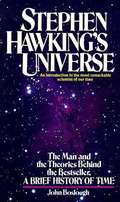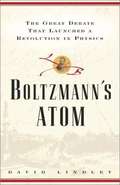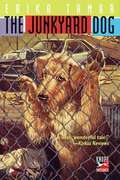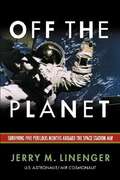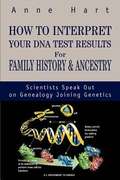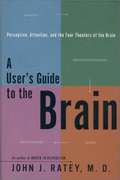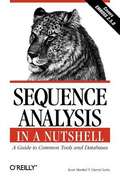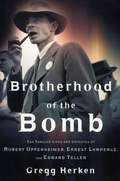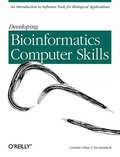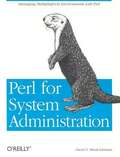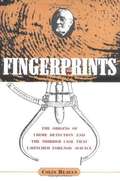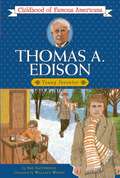- Table View
- List View
The Growth of the Mind: And the Endangered Origins of Intelligence
by Stanley I. GreenspanA short description of how the mind works and how intelligence can be defined.
Stephen Hawking's Universe: An Introduction to the Most Remarkable Scientist of Our Time
by John BosloughSince the publication of "A Brief History of Time" - an introduction to some of the most important theories on the cosmos - Stephen Hawking is known widely as a man who has changed the way we look at the universe. He became a member of the Royal Society at the unusually early age of 32 and became in 1980 Lucasian Professor of Mathematics at Cambridge University. Written with Hawking's assistance, this is a readable account for the non-specialist of his contribution to theoretical physics. It encompasses his theories on the Big Bang and the nature of black holes, and contains the transcript of one of his most important essays.
Boltzman's Atom
by David LindleyDescribes the history of Boltzman and his work in discovering atoms. Also goes into the philosophical debates involved.
Prentice Hall Science Explorer: Earth's Changing Surface
by Joseph D. ExlineIn this 8th grade science text, covering the following four chapters: Mapping Earth's Surface, Weathering and Soil Formation, Erosion and Deposition and finally, A trip Through Geologic Time. Very concise, well written and designed for students to not become overwhelmed by the information.
Complications: A Surgeon's Notes on an Imperfect Science
by Atul GawandeA surgeon writes about some of his most interesting patients.
The Mystery of the Aleph
by Amir D. AczelThe history of infinity emphasizing the people who were interested in the concept. Stresses philosophical and religious importance of mathematical ideas throughout history. Fascinating even if math is not your strong suit.
Full-Court Pressure: A Year in Kentucky Basketball
by Dick Weiss Rick PitinoA year in the life of the then-golden boy of college basketball, former Kentucky coach Rick Pitino.
Mission Jupiter: The Spectacular Journey of the Galileo Spacecraft
by Daniel FischerThe Galileo project is one of the most spectacular undertakings in the history of unmanned space flight.. This book details the planning of the Galileo mission to Jupiter, its arrival and release the Atmospheric Probe, summarizes 400 years of Jupiter research and its findings about the giant planet and its moons. A lot of attention is paid to the exciting discovery of an ocean of water on the Galilean moon Europa.
Off The Planet
by Jerry M. LinengerOn January 12, 1997, Jerry Linenger took off aboard the Space Shuttle Atlantis, en route to an historic 132-day rendezvous with the Russian Space Station Mir. Not since Apollo 13 has an American astronaut Jerry Linenger tells how he became an astronaut and then a cosmonaut. While sharing his own life adventures, he also lets us glimpse what it is like to participate in both the American and Russian space programs. Fast paced; filled with real adventure. faced so many catastrophic malfunctions and life-threatening emergencies in one missionand lived to tell about it.
How to Interpret Your DNA Test Results for Family History and Ancestry: Scientists Speak Out on Genealogy Joining Genetics
by Anne HartHow do you interpret your own DNA test results? How do you write, tape, and transcribe an oral history? Assuming you're a beginner in genealogy with no science background and interested in family history, where do you begin your search? What's the cultural component behind a trait as biological as your genes? If you're a family historian, an oral history researcher, or a person fascinated with ancestry, here's how to understand the results of DNA tests. Different people have different, sometimes opposite opinions on whether DNA testing is a useful tool in the hands of family historians. If you are a carrier of a genetic disorder, DNA testing is useful in researching your family history to find out who was the first carrier in your ancestry back in time. Here the debate unfolds as scientists, authors, physicians, media people, owners of DNA testing companies, genealogists, historians and researchers comment, write, and opine on DNA testing and genealogy. How do you use DNA testing to interpret family history records? How eager are people to take a DNA test for family history research? Most DNA tests require only that someone swish mouthwash around in his or her mouth and send it for testing to a laboratory. So what can a DNA test really tell you about your own ancestry-distant or not so distant? And most of all, how do you interpret and use the results?
User's Guide to the Brain: Perception, Attention, and the Four Theaters of the Brain
by John J. RateyFor the first time ever, discoveries in our understanding of the brain are changing anthropology, linguistics, philosophy, and psychology--indeed, the brain itself may become a catalyst for transforming the very nature of these inquiries. In A User's Guide to the Brain, Dr. John Ratey, best-selling coauthor of Driven to Distraction, explains in lucid detail and with perfect clarity the basic structure and chemistry of the brain: how its systems shape our perceptions, emotions, actions, and reactions; how possession of this knowledge can enable us to more fully understand and improve our lives; and how the brain responds to the guidance of its user. He draws on examples from his own practice, from research, and from everyday life to illuminate aspects of the brain's functioning, among them prenatal and early childhood development; the perceptual systems; the processes of consciousness, memory, emotion, and language; and the social brain. As the best means for explaining the dynamic interactions of the brain, Ratey offers as a metaphor the four "theaters" of exploration: 1) the act of perception; 2) the filters of attention, consciousness, and cognition; 3) the array of options employed by the brain--memory, emotion, language, movement-to transform information into function; and 4) behavior and identity. Ratey succeeds not only in giving us a compelling portrait of the brain's infinite flexibility and unpredictability but also in demonstrating how our very understanding of the brain affects who we are.
The Second Day at Gettysburg
by Gary GallagherDifferent historians examine commanders who fought at Gettysburg.
Simply Einstein: Relativity Demystified
by Richard WolfsonCareful but simplified scientific explanation.
The Interpretation of Nature and the Psyche
by Wolfgang Pauli C. G. JungJung's original essay on synchronicity and Pauli's view as a physicist of archetypes and synchronicity.
Sequence Analysis in a Nutshell
by Darryl Leon Scott MarkelSequence Analysis in a Nutshell: A Guide to Common Tools and Databasespulls together all of the vital information about the most commonly used databases, analytical tools, and tables used in sequence analysis. The book contains details and examples of the common database formats (GenBank, EMBL, SWISS-PROT) and the GenBank/EMBL/DDBJ Feature Table Definitions. It also provides the command line syntax for popular analysis applications such as Readseq and MEME/MAST, BLAST, ClustalW, and the EMBOSS suite, as wel
Brotherhood of the Bomb: The Tangled Lives and Loyalties of Robert Oppenheimer, Ernest Lawrence and Edward Teller
by Gregg HerkenThe lives and interactions of Lawrence, Oppenheimer and Teller, who invented the atomic bomb.
Developing Bioinformatics Computer Skills
by Per Jambeck Cynthia GibasIntroduces the field of bioinformatics: "the application of computational and analytical methods to biological problems.
Perl for System Administration
by David N. Blank-EdelmanPerl for System Administrationis for anyone who needs to use Perl for administrative tasks and needs to hit the ground running.
Fingerprints: The Origins of Crime Detection and the Murder Case that Launched Forensic Science
by Colin BeavanHistory of how fingerprints came to be studied and used in forensics.
Thomas A. Edison:Young Inventor (Childhood of Famous American Series)
by Sue GuthridgeA biography focusing on the childhood of the inventor who patented more than 1,000 inventions in sixty years, among them the electric light and the phonograph.

